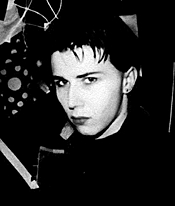 Because of American jurisprudence's standard practice of "innocent unless proven guilty", there are certain advantages given to defendants in criminal cases, involving technicalities of law and occasionally issues that might cause prejudice against a defendant. When evidence is supressed before a trial, it is usually, though not always, in favor of the defendant. Sometimes things get missed, or things that should not get in do. In the trial State of Missouri v. Byron Case, there were a number of facts of evidence that were not presented to the jury.
Because of American jurisprudence's standard practice of "innocent unless proven guilty", there are certain advantages given to defendants in criminal cases, involving technicalities of law and occasionally issues that might cause prejudice against a defendant. When evidence is supressed before a trial, it is usually, though not always, in favor of the defendant. Sometimes things get missed, or things that should not get in do. In the trial State of Missouri v. Byron Case, there were a number of facts of evidence that were not presented to the jury.
- Byron Case had two police interviews before his arrest. One was ruled inadmissible during the
trial. Case spoke with Jackson County Sheriff Deputy Gary Kilgore on July 29, 19991
only after receiving assurances that nothing in the interview could be used against him,2 and his attorney sought in a pre-trial motion to supress all statements made during that interview.3
This supression definitely favored the defendant.
One item that was not discussed anywhere except during that 1999 police interview was a letter that Anastasia had written to Justin only days before her death, giving a strong indication of some of the mutual animosity between her and Byron Case, and providing additional evidentiary weight to Case's suggested motive. Because it was part of that interview and had been introduced nowhere else, it could not be used by prosecution. This supression also favored the defendant.
Since his conviction, the killer and his supporters have attempted to use that letter, or at least a tiny, cherry-picked portion of it (about 5 per cent of it) to argue that Anastasia was suicidal. We include it among our documents in order to give the full picture.4

While the prosecution did not want to exploit the "Goth" angle of this case (long before Dylan Klebold and Eric Harris made it iconic, Byron Case had adopted the fashion "style" of wearing black trenchcoat, and was dressed that way on the night of the murder), they did seek to enter evidence that Case had kept autopsy photos on his computer's screen saver, 5 just to show that he was not the sensitive guy his defense portrayed him to be. The Court would not allow that particular fact out.
The court also did not allow prosecution to delve into certain other activities that would put aspects of Case's general lifestyle on display: his personalized license tags, and various web diaries were put off limits. One very important web page that the jury was not allowed to see was his own fictionalized story of the murder itself.6 Case's online diary also told a story of how he kept a rotting chicken carcass impaled on a pitchfork (right) he had welded onto his car's hood as an ornament.
Case's emails to Anastasia's family, in which he threatened a lawsuit, belittled their relationship with
Anastasia, tried to paint himself as a victim,7 and occasionally told stories inconsistent with his later testimony, were likewise suppressed as hearsay.
Kelly Moffett had taken a Voice Stress Analysis (VSA) test in August 1998, and both sides agreed that it could not be considered admisible in court.8 When she later inadvertently mentioned having taken a VSA during her testimony, a mistrial was nearly declared.9

Case's attorney sought to have Kelly Moffett's psychiatric records opened for review, as he sought to show evidence that she might have given multiple versions of the murder;10 Judge Atwell examined the records in camera and ruled that there was no such evidence present. He also ruled that any diagnosis or treatment of Moffett before the murder was irrelevant as well, as what she did and said on or after that date was relevant and still revealed no such behavior as Case was seeking to show.
One piece of evidence and one incident concerning the murder were not even brought up during the trial. A psychological test that was administered to the defendant while in custody was also never used.
 Because of American jurisprudence's standard practice of "innocent unless proven guilty", there are certain advantages given to defendants in criminal cases, involving technicalities of law and occasionally issues that might cause prejudice against a defendant. When evidence is supressed before a trial, it is usually, though not always, in favor of the defendant. Sometimes things get missed, or things that should not get in do. In the trial State of Missouri v. Byron Case, there were a number of facts of evidence that were not presented to the jury.
Because of American jurisprudence's standard practice of "innocent unless proven guilty", there are certain advantages given to defendants in criminal cases, involving technicalities of law and occasionally issues that might cause prejudice against a defendant. When evidence is supressed before a trial, it is usually, though not always, in favor of the defendant. Sometimes things get missed, or things that should not get in do. In the trial State of Missouri v. Byron Case, there were a number of facts of evidence that were not presented to the jury.

